“Vasculitis” is the umbrella term for a group of rare diseases that cause inflammation of the blood vessels and impaired blood flow. Urticarial vasculitis is a type of vasculitis that primarily affects small blood vessels in the skin.
There is no cure for urticarial vasculitis, but medical professionals can help a person manage the symptoms. In cases of severe and systemic urticarial vasculitis, a person may require intermittent or continual treatment with immune system suppressants.
Dermatology resources
Visit our dedicated hub for more research-backed information and in-depth resources on dermatology.
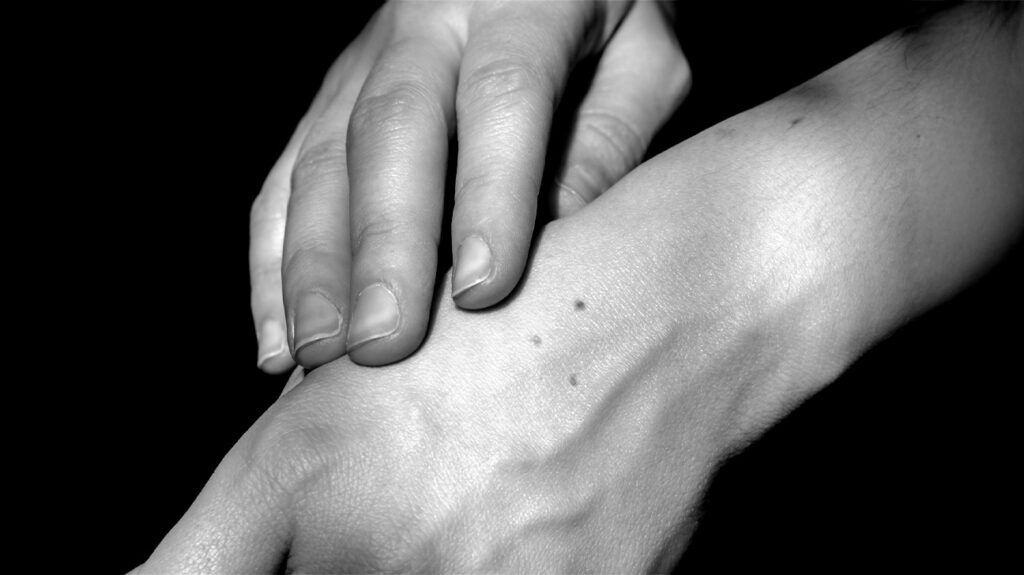
As the American College of Rheumatology explains, “vasculitis” is the umbrella term for a group of rare diseases that cause inflammation of the blood vessels. The condition impairs blood flow to the body’s organs and tissues.
According to the Vasculitis Foundation, urticarial vasculitis is a form of vasculitis that primarily affects small blood vessels in the skin but may also affect other organ systems.
It is an autoimmune disorder. This means the body’s immune system mistakenly attacks healthy tissue and causes chronic inflammation.
There are two types of urticarial vasculitis, which differ according to the extent they involve specific proteins called complement proteins.
As the National Institutes of Health explains, complement proteins ordinarily work together to fight infectious organisms.
The two types of urticarial vasculitis are:
- Normocomplementemic urticarial vasculitis: This type involves a normal level of complement proteins. It is typically less severe and does not usually affect multiple organs or tissues.
- Hypocomplementemic urticarial vasculitis: This type involves low levels of complement proteins. It is more severe and usually affects multiple organs and tissues, such as the:
- eyes
- lungs
- kidneys
- gastrointestinal tract
- joints
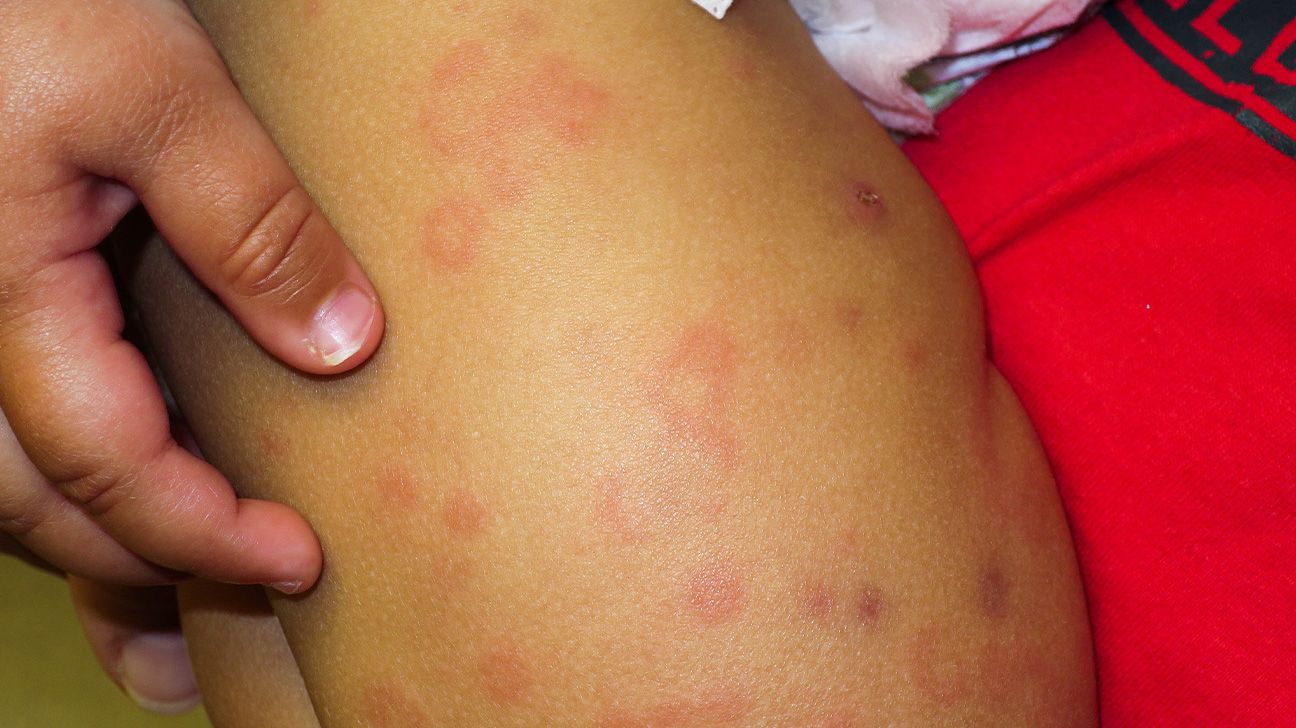
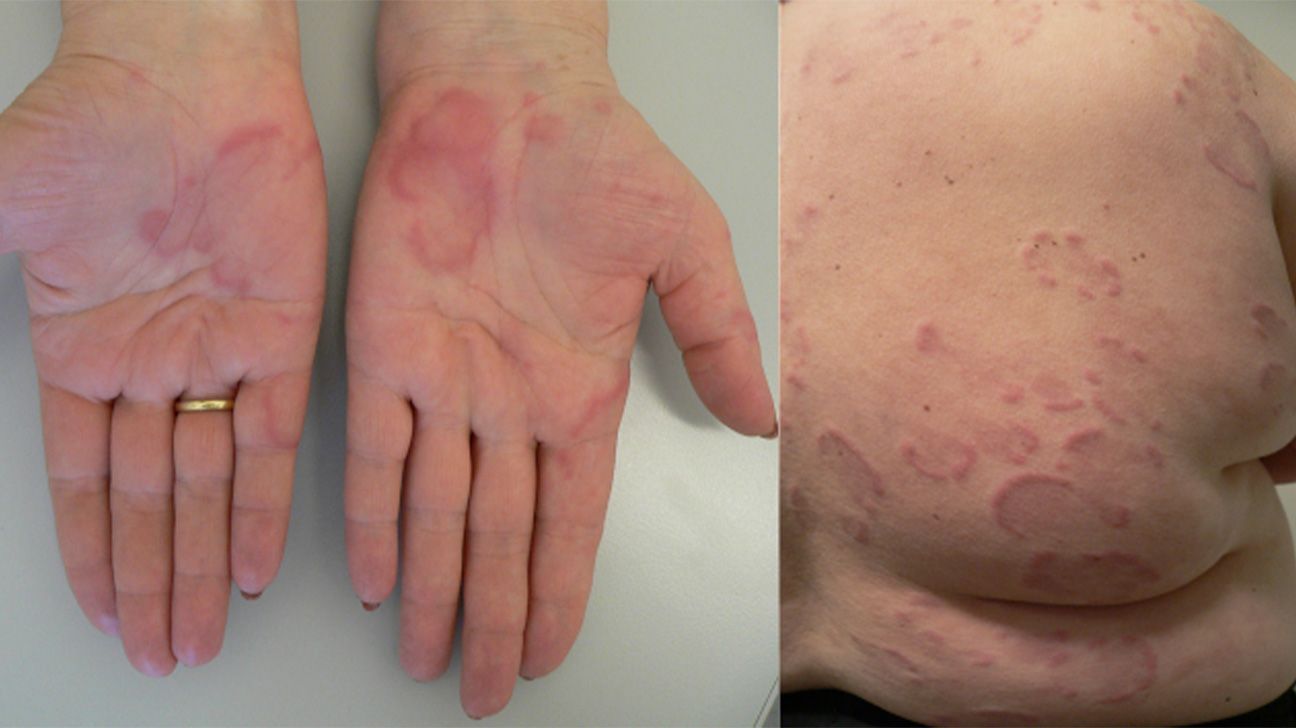
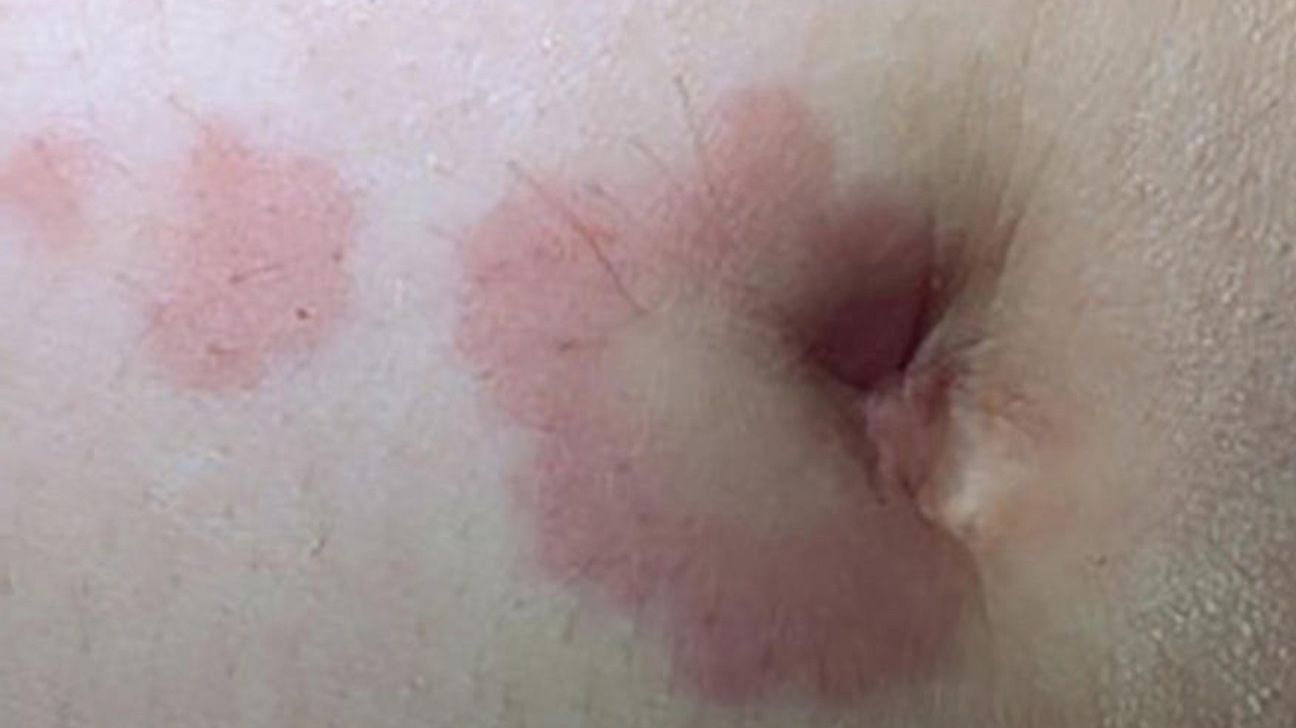

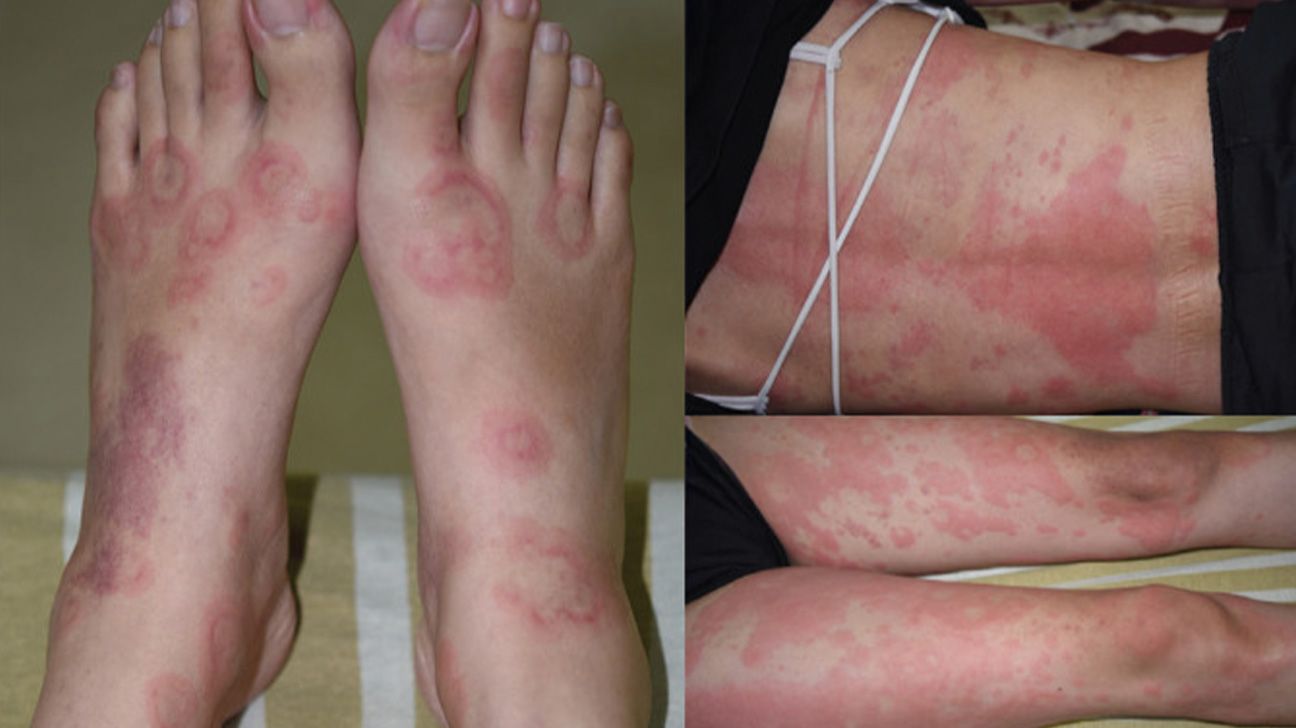
According to the Vasculitis Foundation, urticarial vasculitis typically begins with an eruption of skin lesions and hives, which may cause pain, burning, and itching. Skin patches may also develop, and these may have the following characteristics:
- a red rim
- a white center
- red or purple pinprick spots resulting from bleeding beneath the skin
The skin patches may persist for 24 hours or more and may leave a bruise-like skin discoloration as they heal.
People with severe urticarial vasculitis may also experience widespread (systemic) symptoms, such as:
- fever
- joint pain
- bloodshot or inflamed eyes
- swelling beneath the skin
- abdominal pain
- swollen lymph nodes
- shortness of breath
According to a 2021 review, scientists have still not identified the exact cause of urticarial vasculitis, though they have identified several potential triggers. These are outlined next.
Medications
Medications that may trigger urticarial vasculitis in some people include:
- nonsteroidal anti-inflammatory drugs (NSAIDs)
- drugs to treat high blood pressure, such as diltiazem, telmisartan, and enalapril
- cimetidine, a stomach acid reducer
- levetiracetam, an epilepsy medication
- fluoxetine, an antidepressant
- potassium iodide
- over-the-counter diet pills
Infections
Infections that may have the potential to trigger urticarial vasculitis include:
- bacterial infections or diseases, such as:
- viral infections, such as:
- hepatitis B and C
- Epstein–Barr virus
- COVID-19
- influenza A (H1N1)
- parasitic infections, such as trichomoniasis
Autoimmune diseases
According to a 2021 review, scientists have also suggested a link between urticarial vasculitis and other autoimmune diseases, such as:
According to the Vasculitis Foundation, there is no diagnostic test for vasculitis. Instead, the diagnostic procedure may involve a doctor performing or ordering a combination of the following:
- a physical examination
- skin biopsies to confirm damage to small blood vessels
- blood tests to assess:
Because of the link between urticarial vasculitis and other diseases, doctors may also conduct tests to rule out any underlying health conditions.
The treatment for urticarial vasculitis depends on the severity of the condition and the organs affected.
Skin lesions may resolve without the need for treatment, or with the help of antihistamines and NSAIDs. Persistent lesions may require treatment with other medications, such as:
- hydroxychloroquine
- colchicine
- dapsone
In cases of severe and systemic urticarial vasculitis, a person may require intermittent or continual treatment with immune system suppressants, such as:
As the Vasculitis Foundation explains, urticarial vasculitis can be a chronic disease involving periods of relapse and remission. This may be the case even if a person takes medication.
A 2021 review notes that lung complications are the primary cause of death in people with urticarial vasculitis.
However, routine monitoring and checkups can help doctors detect and treat urticarial vasculitis relapses early before complications develop.
Below are some answers to frequently asked questions about urticarial vasculitis.
How to get rid of urticarial vasculitis?
As the Vasculitis Foundation explains, urticarial vasculitis is a chronic condition. There is currently no cure.
However, treatments are available to help alleviate skin symptoms. When necessary, stronger medications are also available to help suppress the immune system and prevent complications.
What blood test is done for urticarial vasculitis?
According to Vasculitis UK, the following blood tests can help confirm a diagnosis of urticarial vasculitis and identify the type:
- tests for inflammatory markers, including C-reactive protein and erythrocyte sedimentation rate
- tests for the presence of C1q, anti-C1q, C3, and C4 complement components
- tests for the presence of autoantibodies, such as antinuclear antibodies and antineutrophil cytoplasmic antibodies
What doctor treats urticarial vasculitis?
A person with urticarial vasculitis may receive treatment from a team of healthcare professionals and specialists, including:
- their primary care physician
- a rheumatologist, a doctor who specializes in conditions involving the joints, muscles, and immune system
- a pulmonologist, a doctor who specializes in diagnosing and treating respiratory diseases
- a nephrologist, a doctor who specializes in diagnosing and treating kidney diseases
- an immunologist, a doctor who specializes in diagnosing and treating allergies
Urticaria vasculitis is a rare type of vasculitis that causes chronic skin inflammation and hives and sometimes affects other organs.
There are two types: normocomplementemic urticarial vasculitis, which is less severe, and hypocomplementemic urticarial vasculitis, which may require immune-suppressant treatments.
Regular monitoring helps manage symptoms and prevent complications.


